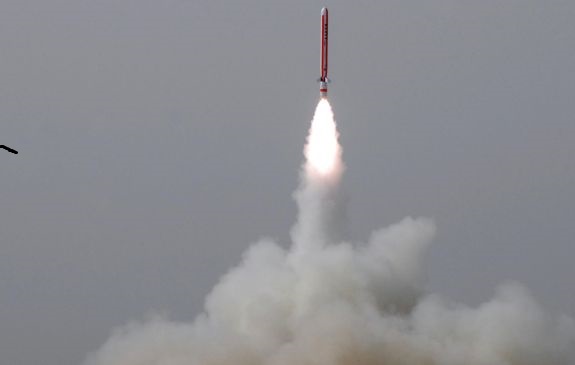
This Hubble Space Telescope image shows the gargantuan galaxy M60 in the center, and the ultracompact dwarf galaxy M60-UCD1 below it and to the right, and also enlarged as an inset. Photo Credit: NASA/Space Telescope Science Institute/European Space Agency
WASHINGTON (PTI): Astronomers led by an Indian-origin scientist have discovered a monster black hole lurking inside one of the tiniest and densest galaxies ever known located 54 million light years from Earth.
Though the black hole is five times the mass of the black hole at the centre of our Milky Way, it is inside a galaxy that crams 140 million stars within a diameter of about 300 light-years, only 1/500th of our galaxy's diameter.
The dwarf galaxy containing the black hole, called M60-UCD1, is the densest galaxy ever seen, researchers said.
If you lived inside of it, the night sky would dazzle with at least 1 million stars visible to the naked eye as opposed to 4,000 stars in our nighttime sky, as seen from Earth's surface, they said.
The finding implies that there are many other very compact galaxies in the Universe that contain supermassive black holes.
The observation also suggests that dwarf galaxies may actually be the stripped remnants of larger galaxies that were torn apart during collisions with yet other galaxies - rather than small islands of stars born in isolation.
"We don't know of any other way you could make a black hole so big in an object this small," said University of Utah astronomer Anil Seth, lead author of the study.
His team of astronomers used the Hubble Space Telescope and the Gemini North 8-metre optical and infrared telescope on Hawaii's Mauna Kea to observe M60-UCD1 and measure the black hole's mass.
Black holes are gravitationally collapsed, ultracompact objects that have a gravitational pull so strong that even light cannot escape. Supermassive black holes - those with the mass of at least 1 million stars like our Sun - are thought to be at the centres of many galaxies.
The black hole at the centre of our Milky Way galaxy has the mass of 4 million suns, but as heavy as that is, it is less than 0.01 per cent of the Milky Way's total mass.
By comparison, the supermassive black hole at the centre of M60-UCD1 is a stunning 15 per cent of the small galaxy's total mass.
"That is pretty amazing, given that the Milky Way is 500 times larger and more than 1,000 times heavier than the dwarf galaxy M60-UCD1," Seth said.
One explanation is that M60-UCD1 was once a large galaxy containing 10 billion stars, but then it passed very close to the centre of an even larger galaxy, M60, and in that process all the stars and dark matter in the outer part of the galaxy got torn away and became part of M60.
The team believes that M60-UCD1 may eventually be pulled back to merge with the centre of M60, which has its own monster black hole, weighing a whopping 4.5 billion solar masses (more than 1,000 times bigger than the black hole in our galaxy). The galaxies are 50 million light-years away.
The study was published in the journal Nature.
 Previous Article
Previous Article Next Article
Next Article












The Indian Air Force, in its flight trials evaluation report submitted before the Defence Ministry l..
view articleAn insight into the Medium Multi-Role Combat Aircraft competition...
view articleSky enthusiasts can now spot the International Space Station (ISS) commanded by Indian-American astr..
view article